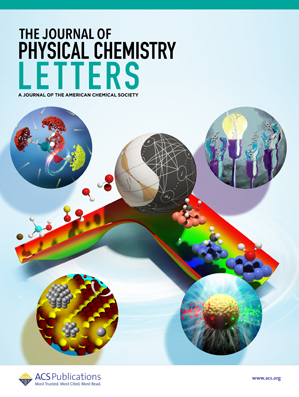Self-Catalyzed Carbon Nanotubes with Dual-Active-Site Co/CoN4 Motifs for High-Efficiency Bifunctional Oxygen Electrocatalysis
IF 4.8
2区 化学
Q2 CHEMISTRY, PHYSICAL
引用次数: 0
Abstract
Carbon nanotubes (CNTs) have garnered significant attention due to their large specific surface area and efficient mass transfer properties. However, the construction of well-ordered CNT catalysts with high-efficiency bifunctional oxygen electrocatalytic activity remains a significant challenge. Herein, the uniform size of CNTs with high-density dual-active-site Co/CoN4 motifs (A-Co/Co-NC) is rationally designed and fabricated through an in situ metal–ligand anchoring method (N → Co2+) followed by a pyrolysis process. The selected 2,6-diaminopurine (DAP) can anchor and disperse Co ions in N sites, which will form uniform CNTs with Co NPs and CoN4 active sites during the pyrolysis process. Theoretical calculation and in situ characteristics clearly proved that Co NP works as an OER active unit and that CoN4 acts as an ORR active site. Benefiting from the high-density dual-active-site Co/CoN4 motifs, the A-Co/Co-NC catalyst displays superior bifunctional performance (ΔE = 0.76 V). Therefore, the A-Co/Co-NC-based zinc–air battery (ZAB) exhibits distinguished reversibility. Remarkably, the A-Co/Co-NC-based Al–air battery (AAB) has a high power density (129.12 mW cm–2). This work provides a feasible design concept to obtain well-organized CNTs with highly dispersed active sites.具有双活性位点Co/CoN4基序的自催化碳纳米管用于高效双功能氧电催化
碳纳米管(CNTs)由于具有较大的比表面积和高效的传质性能而引起了人们的广泛关注。然而,构建具有高效双功能氧电催化活性的有序碳纳米管催化剂仍然是一个重大挑战。本文通过原位金属配体锚定法(N→Co2+)和热解工艺,合理设计和制备了具有高密度双活性位点Co/CoN4基序(a -Co/Co- nc)的均匀尺寸的碳纳米管。选择的2,6-二氨基嘌呤(DAP)可以锚定和分散Co离子在N位点上,在热解过程中与Co NPs和CoN4活性位点形成均匀的碳纳米管。理论计算和原位特征清楚地证明了Co NP作为OER活性单元,CoN4作为ORR活性位点。得益于高密度的双活性位点Co/CoN4基序,A-Co/Co- nc催化剂表现出优异的双功能性能(ΔE = 0.76 V)。因此,A-Co/ co - nc基锌空气电池(ZAB)表现出明显的可逆性。值得注意的是,a - co / co - nc基铝空气电池(AAB)具有高功率密度(129.12 mW cm-2)。这项工作为获得具有高度分散活性位点的组织良好的碳纳米管提供了可行的设计概念。
本文章由计算机程序翻译,如有差异,请以英文原文为准。
求助全文
约1分钟内获得全文
求助全文
来源期刊

The Journal of Physical Chemistry Letters
CHEMISTRY, PHYSICAL-NANOSCIENCE & NANOTECHNOLOGY
CiteScore
9.60
自引率
7.00%
发文量
1519
审稿时长
1.6 months
期刊介绍:
The Journal of Physical Chemistry (JPC) Letters is devoted to reporting new and original experimental and theoretical basic research of interest to physical chemists, biophysical chemists, chemical physicists, physicists, material scientists, and engineers. An important criterion for acceptance is that the paper reports a significant scientific advance and/or physical insight such that rapid publication is essential. Two issues of JPC Letters are published each month.
 求助内容:
求助内容: 应助结果提醒方式:
应助结果提醒方式:


